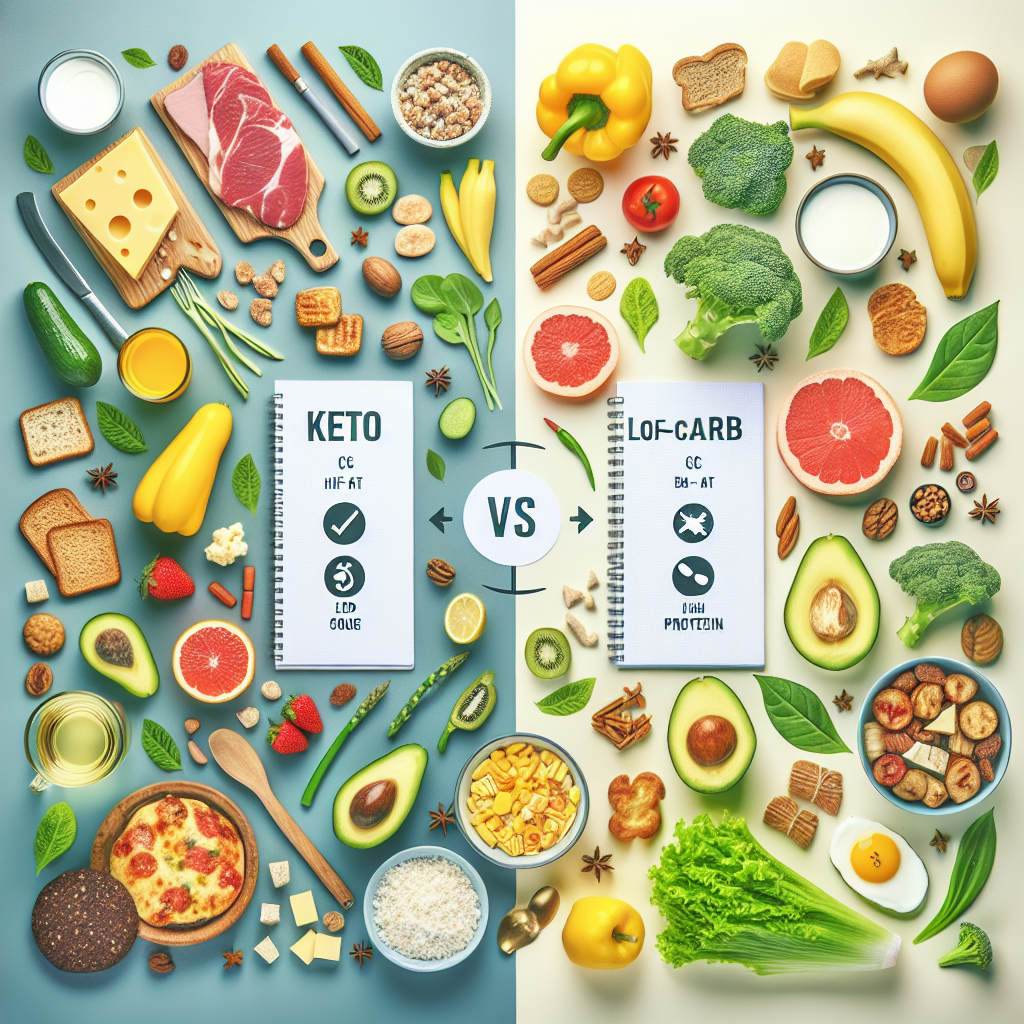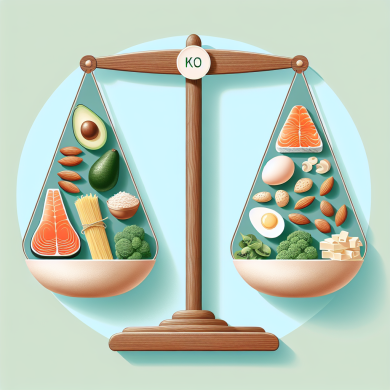Comparing Keto and Low-Carb Diets: Key Differences
Introduction
In recent years, dietary trends have shifted significantly towards reducing carbohydrate intake. Among the most popular approaches to this are the ketogenic (keto) and low-carb diets. While both diets focus on minimizing carbohydrates, their methods and impacts vary considerably. This article delves into the key differences between these two dietary strategies, helping you understand which might be more suitable for your health and lifestyle goals.
Understanding the Basics
What is a Keto Diet?
The ketogenic diet is a high-fat, moderate-protein, and low-carbohydrate eating plan. It aims to shift the body’s primary energy source from carbohydrates to fats, a metabolic state known as ketosis. To achieve this, the diet typically limits carbohydrate intake to about 5-10% of total daily calories, with fats comprising 70-80% and proteins making up 10-20%.
What is a Low-Carb Diet?
A low-carb diet, on the other hand, is less restrictive than keto. While it still reduces carbohydrate intake, it does not require the same level of limitation as keto does. Low-carb diets generally allow for up to 25-30% of daily caloric intake from carbohydrates, with a greater emphasis on protein consumption. This flexibility makes it easier for many people to adhere to over the long term.
Key Differences Between Keto and Low-Carb Diets
Macronutrient Composition
The most significant difference between keto and low-carb diets is their macronutrient ratios. Keto diets are high in fats, moderate in proteins, and very low in carbohydrates. In contrast, low-carb diets have a more balanced distribution of macronutrients, with a relatively higher carbohydrate allowance and protein intake.
State of Ketosis
Achieving and maintaining ketosis is central to the ketogenic diet. This metabolic state allows the body to burn fat for fuel, which can lead to significant weight loss and other health benefits. Low-carb diets do not necessarily aim to induce ketosis; instead, they focus on reducing carbohydrate intake to manage weight and improve metabolic health without the strict requirements of a keto diet.
Flexibility and Sustainability
Low-carb diets are generally more flexible and sustainable over the long term. They allow for a broader range of foods and are easier to adapt to different lifestyles and preferences. Keto diets, with their stringent carbohydrate restrictions, can be challenging to maintain, especially in social settings or when eating out.
Health Benefits
Both diets offer health benefits, but they vary in scope and intensity. Keto diets have been shown to be particularly effective for rapid weight loss and managing certain medical conditions, such as epilepsy. Low-carb diets, while also effective for weight loss, tend to provide broader health benefits, including improved blood sugar control, reduced risk of cardiovascular disease, and better overall metabolic health.
Potential Side Effects
The ketogenic diet can lead to side effects, particularly in the initial stages. Known as the “keto flu,” symptoms may include fatigue, headaches, dizziness, nausea, and irritability. These symptoms typically resolve as the body adjusts to ketosis. Low-carb diets are less likely to cause such side effects, as the reduction in carbohydrate intake is not as drastic.
Choosing the Right Diet for You
Weight Loss Goals
If rapid weight loss is your primary goal, the keto diet may offer a more immediate solution due to its ability to induce ketosis. However, for those who prefer a gradual and steady approach, a low-carb diet may be more suitable, providing sustainable weight loss over time.
Dietary Preferences
Personal taste and food preferences play a significant role in choosing a diet. If you enjoy a variety of foods and find it challenging to eliminate entire food groups, a low-carb diet may be more appropriate. Conversely, if you are comfortable with a high-fat intake and can adhere to strict dietary guidelines, the keto diet might be a good fit.
Health Conditions
Certain health conditions may influence your choice between keto and low-carb diets. For example, the keto diet has been effective in managing epilepsy and may benefit individuals with insulin resistance or type 2 diabetes. However, if you have kidney issues or a history of disordered eating, a low-carb diet might be a safer option.
Practical Tips for Success
Transitioning to a Keto or Low-Carb Diet
Gradually reducing carbohydrate intake can help ease the transition to either diet. For keto, this means slowly increasing fat intake while cutting down on carbs to reach the desired macronutrient ratio. For low-carb, it involves making smarter carbohydrate choices and focusing on whole, unprocessed foods.
Meal Planning and Preparation
Successful adherence to either diet requires planning and preparation. Organizing meals in advance, understanding food labels, and having keto or low-carb snacks on hand can help maintain dietary compliance and avoid temptation.
Monitoring Progress
Keeping track of your progress is crucial for staying motivated and making necessary adjustments. Regularly monitor your weight, body measurements, and energy levels. For those on the keto diet, tracking ketone levels can also help assess whether you are in ketosis.
Seeking Professional Guidance
Consulting with a healthcare professional or registered dietitian can provide personalized guidance and support. They can help tailor the diet to your specific needs, address any concerns, and ensure you are meeting your nutritional requirements.
Conclusion
Both the keto and low-carb diets offer viable pathways to improved health and weight management, but they cater to different needs and preferences. Understanding the key differences between these diets can help you make an informed decision about which approach aligns best with your lifestyle and health goals. Whether you choose the structured, high-fat focus of the keto diet or the more flexible, balanced approach of a low-carb diet, success ultimately depends on consistency, commitment, and a willingness to adapt to a healthier way of eating.















Add comment